前面涉及到了一个解决办法就是起别名,后面还是将resultMap来引入解决问题
(84条消息) resultMap的用法以及关联结果集映射_正在努力的陈序员的博客-CSDN博客_resultmap
可以使用resultmap来进行映射,id表示的是主键,result表示的是其他的非主键
<!DOCTYPE mapper PUBLIC "-//mybatis.org//DTD Mapper 3.0//EN" "http://mybatis.org/dtd/mybatis-3-mapper.dtd">
<mapper namespace="org.example.mapper.BookMapper">
<resultMap id="bookmap" type="book">
<id property="id" column="bookid"></id>
<result property="name" column="bookname"></result>
</resultMap>
<select id="getAll" resultMap="bookmap">
select bookid ,bookname
from book
</select>
</mapper>
<!-- List<Users> getAll();-->
<!-- 我不太清楚 resultType里面的参数是不是 可以换成任意的 只要是数据类型一致的-->
<!-- <sql id="allColumns">-->
<!-- id,username,birthday,sex,address-->
<!-- </sql>-->
表之间的关联关系
关联关系是有方向的
一对多反过来就是多对一
一对一
多对多 园区里面的车位和园区里面的每一辆车,任意的车和任意的车位
2表示的是对应的关系 4表示的是为了的意思
主键表和外键表
主键表就是当前有主键被别人引用当成了外键
一对多进行表的连接和调用:
package org.example.mapper;
import org.example.pojo.Customer;
import java.util.List;
public interface CustomerMapper {
List<Customer> getById(int id);
}
package org.example;
import org.apache.ibatis.io.Resources;
import org.apache.ibatis.session.SqlSession;
import org.apache.ibatis.session.SqlSessionFactory;
import org.apache.ibatis.session.SqlSessionFactoryBuilder;
import org.example.mapper.CustomerMapper;
import org.example.pojo.Customer;
import org.junit.After;
import org.junit.Before;
import org.junit.Test;
import java.io.IOException;
import java.io.InputStream;
import java.util.List;
public class TestCustomer {
SqlSession sqlSession;
CustomerMapper mapper;
@Before
public void createSession() throws IOException {
InputStream resourceAsStream = Resources.getResourceAsStream("SqlMapConfig.xml");
SqlSessionFactory build = new SqlSessionFactoryBuilder().build(resourceAsStream);
sqlSession = build.openSession();
mapper = sqlSession.getMapper(CustomerMapper.class);
}
@After
public void closeSession(){
sqlSession.close();
}
@Test
public void test01(){
List<Customer> byId = mapper.getById(1);
byId.forEach(lala->System.out.println(lala));
}
}
//这里用list放进去很有趣
package org.example.pojo;
import java.util.List;
public class Customer {
private Integer id;
private String name;
private Integer age;
List<Orders> listOrders;
public Customer() {
}
public Customer(Integer id, String name, Integer age, List<Orders> listOrders) {
this.id = id;
this.name = name;
this.age = age;
this.listOrders = listOrders;
}
public Customer(String name, Integer age, List<Orders> listOrders) {
this.name = name;
this.age = age;
this.listOrders = listOrders;
}
public Integer getId() {
return id;
}
public void setId(Integer id) {
this.id = id;
}
public String getName() {
return name;
}
public void setName(String name) {
this.name = name;
}
public Integer getAge() {
return age;
}
public void setAge(Integer age) {
this.age = age;
}
public List<Orders> getListOrders() {
return listOrders;
}
public void setListOrders(List<Orders> listOrders) {
this.listOrders = listOrders;
}
}
<!-- typemap YYDS-->
<!DOCTYPE mapper PUBLIC "-//mybatis.org//DTD Mapper 3.0//EN" "http://mybatis.org/dtd/mybatis-3-mapper.dtd">
<mapper namespace="org.example.mapper.CustomerMapper">
<!-- List<Customer> getById(int id);-->
<resultMap id="customermap" type="customer">
<id property="id" column="cid"></id>
<result property="name" column="name"></result>
<result property="age" column="age"></result>
<collection property="listOrders" ofType="org.example.pojo.Orders">
<id property="id" column="oid"></id>
<result property="orderNumber" column="orderNumber"></result>
<result property="orderPrice" column="orderPrice"></result>
</collection>
</resultMap>
<select id="getById" parameterType="int" resultMap="customermap">
select c.id cid,name,age,o.id oid,orderNumber,orderPrice,orderPrice,customer_id
from customer c inner join orders o on c.id = o.customer_id
where c.id = #{cid}
</select>
</mapper>多对一 多对一是对象 一对多是集合
package org.example.pojo;
public class Orders {
private Integer id;
private String orderNumber;
private Double orderPrice;
private Customer customer;
public Orders(Integer id, String orderNumber, Double orderPrice, Customer customer) {
this.id = id;
this.orderNumber = orderNumber;
this.orderPrice = orderPrice;
this.customer = customer;
}
public Orders() {
}
public Integer getId() {
return id;
}
public void setId(Integer id) {
this.id = id;
}
public String getOrderNumber() {
return orderNumber;
}
public void setOrderNumber(String orderNumber) {
this.orderNumber = orderNumber;
}
public Double getOrderPrice() {
return orderPrice;
}
public void setOrderPrice(Double orderPrice) {
this.orderPrice = orderPrice;
}
public Customer getCustomer() {
return customer;
}
public void setCustomer(Customer customer) {
this.customer = customer;
}
@Override
public String toString() {
return "Orders{" +
"id=" + id +
", orderNumber='" + orderNumber + '\'' +
", orderPrice=" + orderPrice +
", customer=" + customer +
'}';
}
}
package org.example.mapper;
import org.example.pojo.Orders;
public interface OrdersMapper {
Orders getById(Integer in);
}
<!DOCTYPE mapper PUBLIC "-//mybatis.org//DTD Mapper 3.0//EN" "http://mybatis.org/dtd/mybatis-3-mapper.dtd">
<mapper namespace="org.example.mapper.OrdersMapper">
<!-- Orders getById(Integer in);-->
<resultMap id="ordersmap" type="orders">
<id property="id" column="id"></id>
<result property="orderNumber" column="orderNumber"></result>
<result property="orderPrice" column="orderPrice"></result>
<association property="customer" javaType="customer">
<id property="id" column="id"></id>
<result property="name" column="name"></result>
<result property="age" column="age"></result>
</association>
</resultMap>
<select id="getById" parameterType="int" resultMap="ordersmap">
select o.id oid,orderNumber,orderPrice,c.id cid,name,age
from orders o inner join customer c
on o.customer_id = c.id
where o.id=#{id}
</select>
</mapper>多对多 可以通过中间表来实现优化
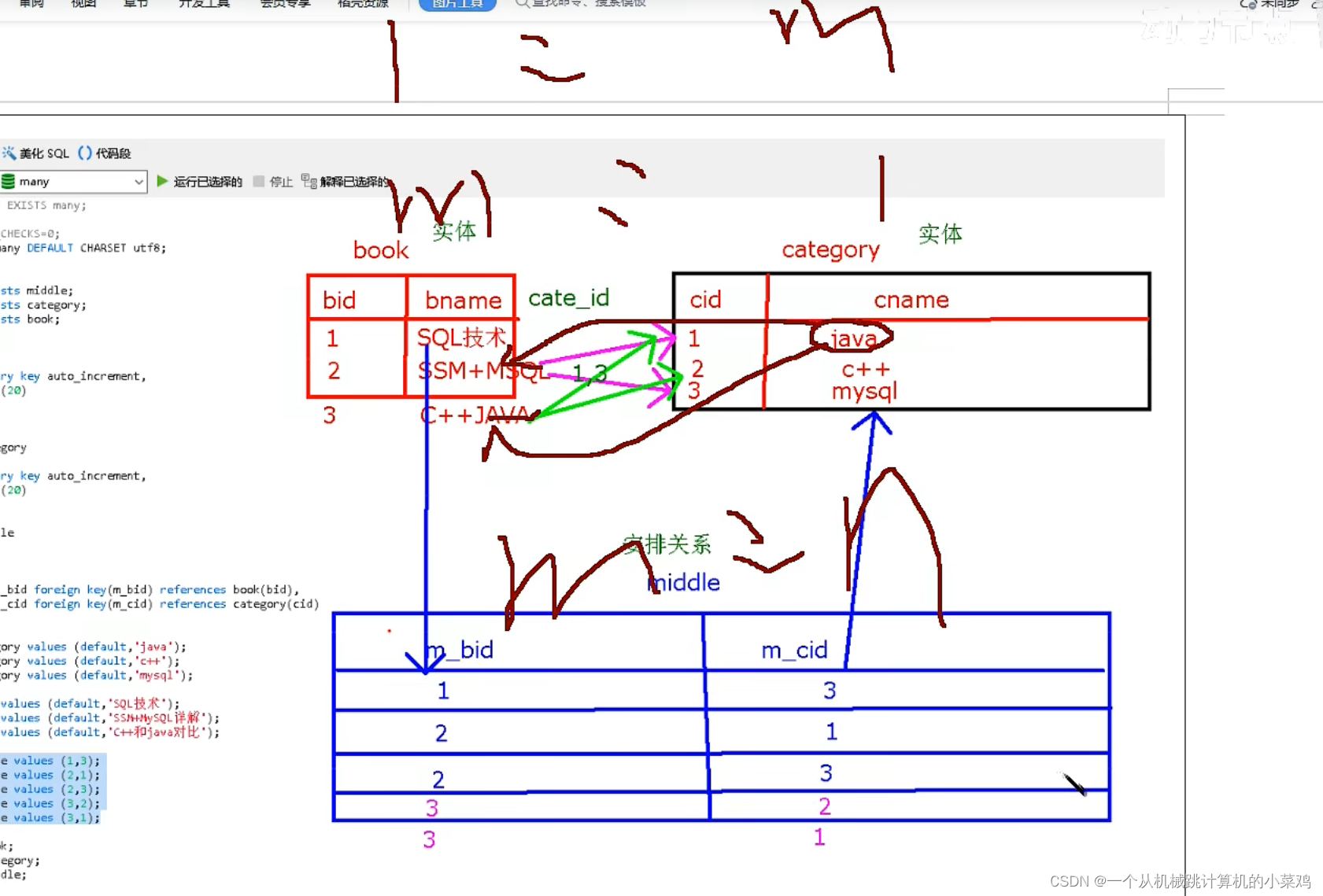
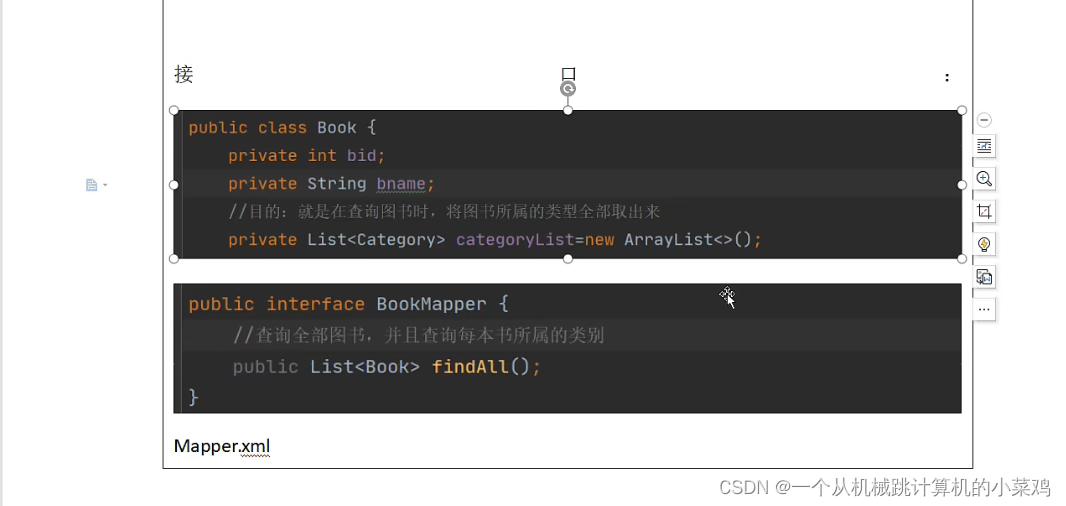

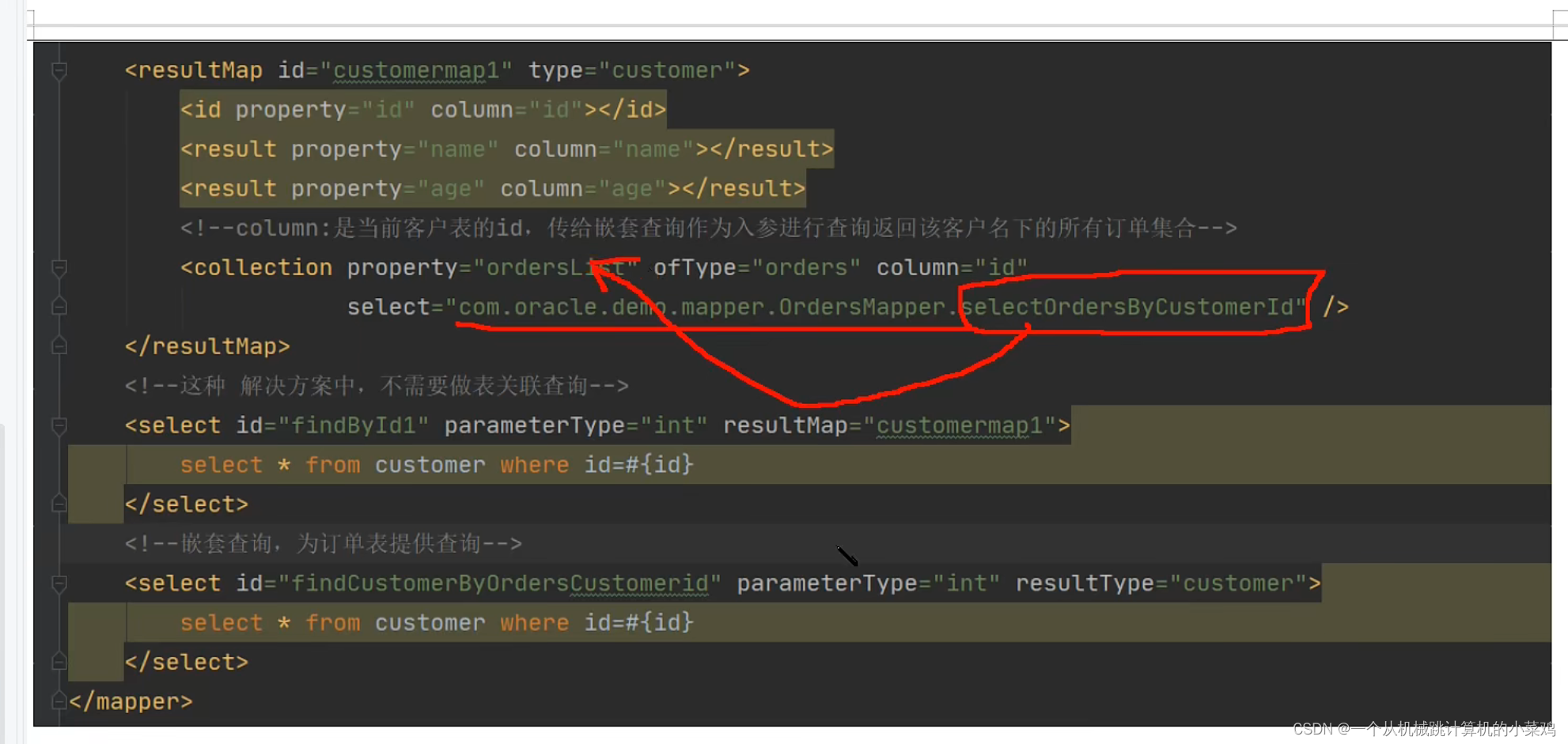
事务自动提交可以在factory创建sqlsession的时候设置为true

mybatis框架提供两级一级缓存的,默认为一级缓存,缓存就是为了提高查询的效率
数据库发生改变,则缓存清空

缓存的作用域:

一级缓存是sqlSession的作用域
二级缓存是mapper的作用域
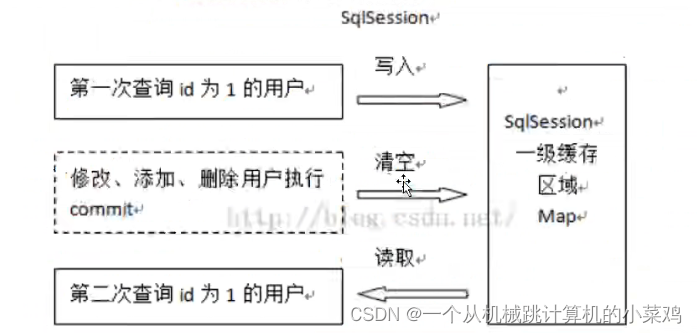

第一次取和第二次取的数值是一样的
开启二级缓存的方法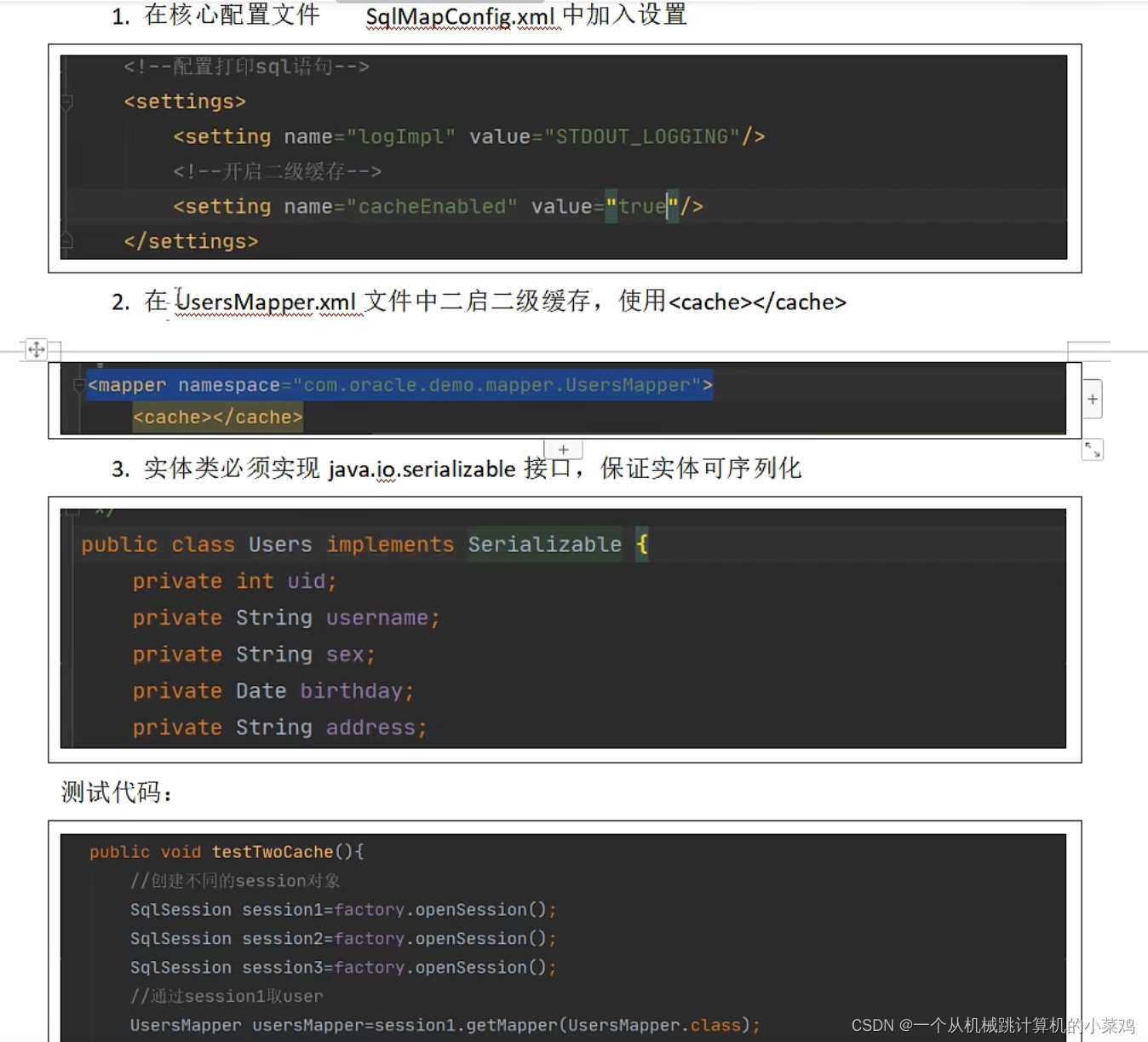

ORM解释:对象关系映射和持久化是一个意思,就是对象和数据的映射关系
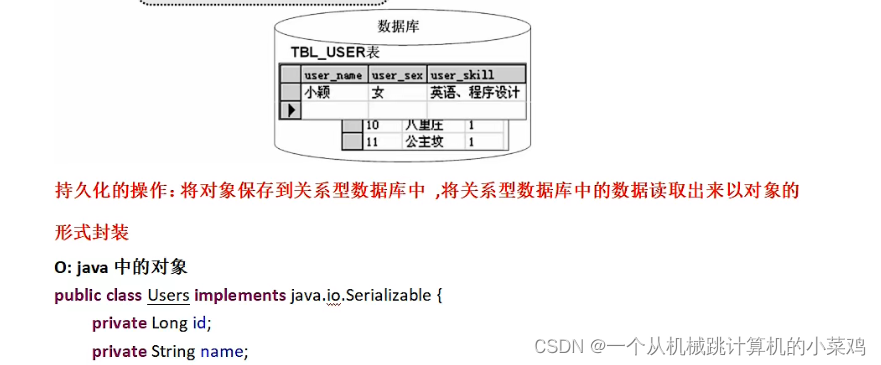
mybatis是ORM或者说是持久化非常优秀的框架
动力节点2022最新Mybatis框架教程-快速搞定MyBatis框架_哔哩哔哩_bilibili
七个规范:
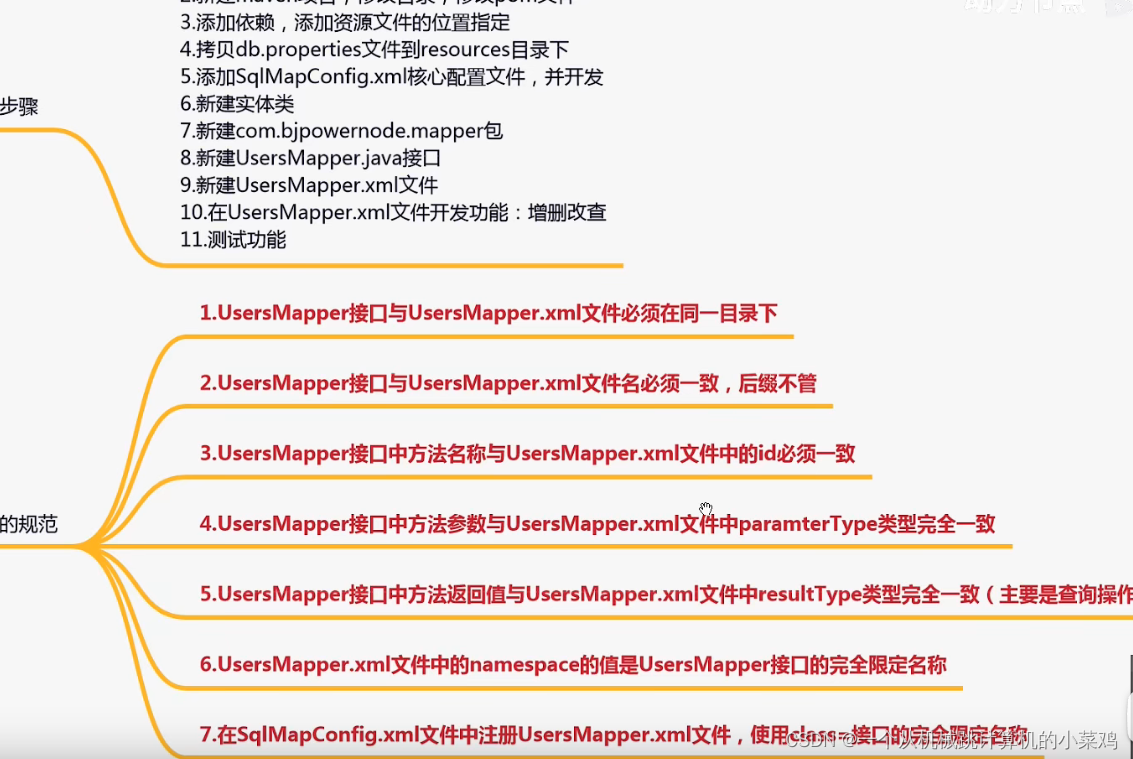


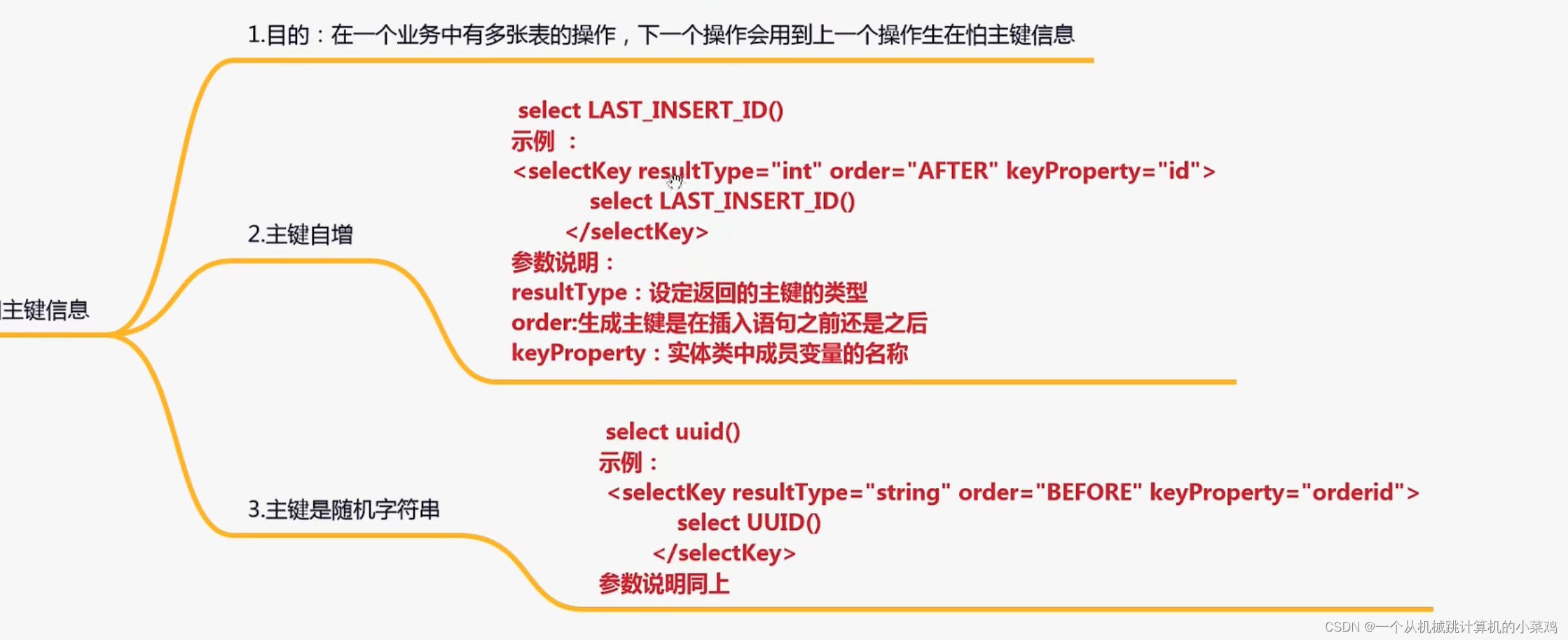
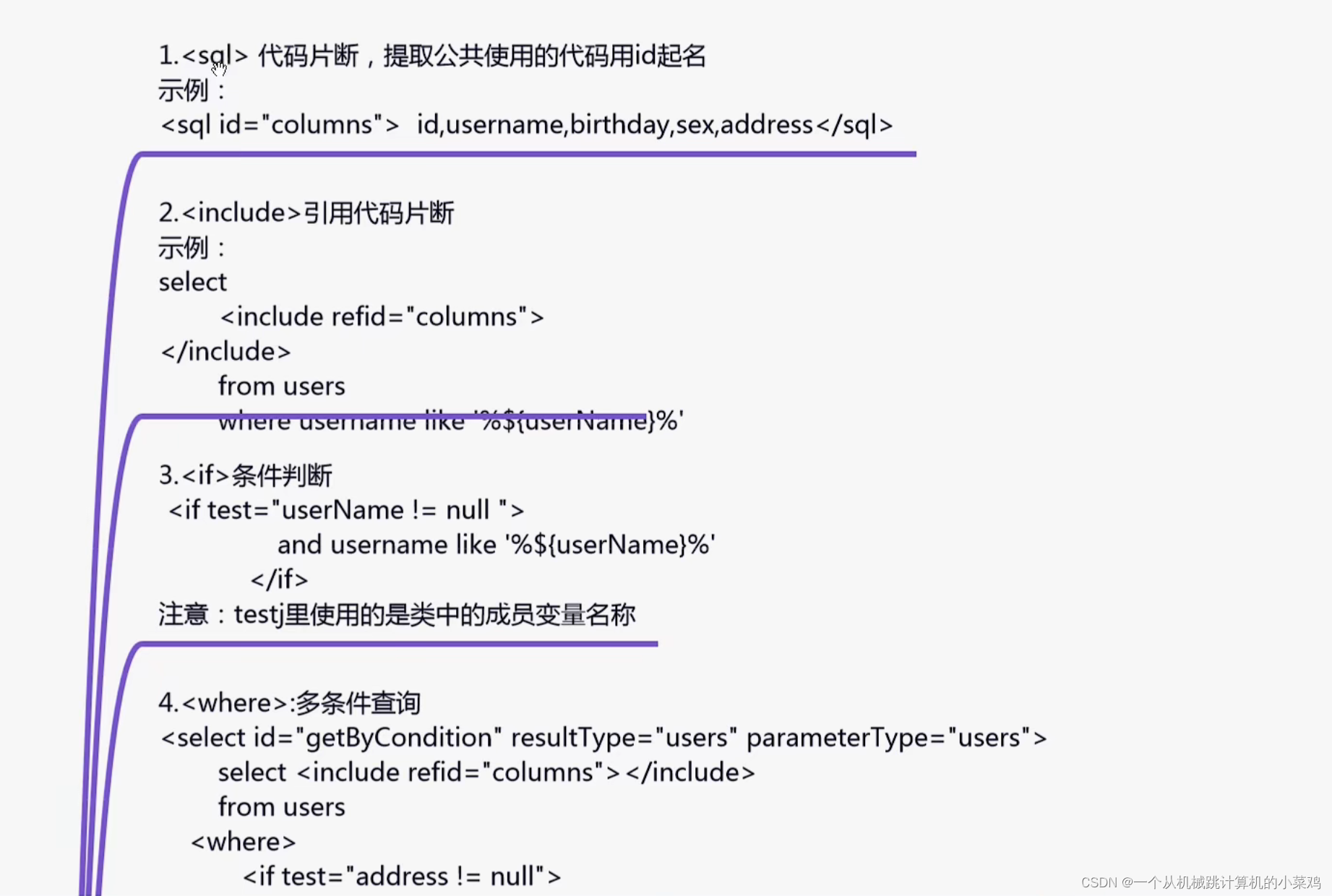
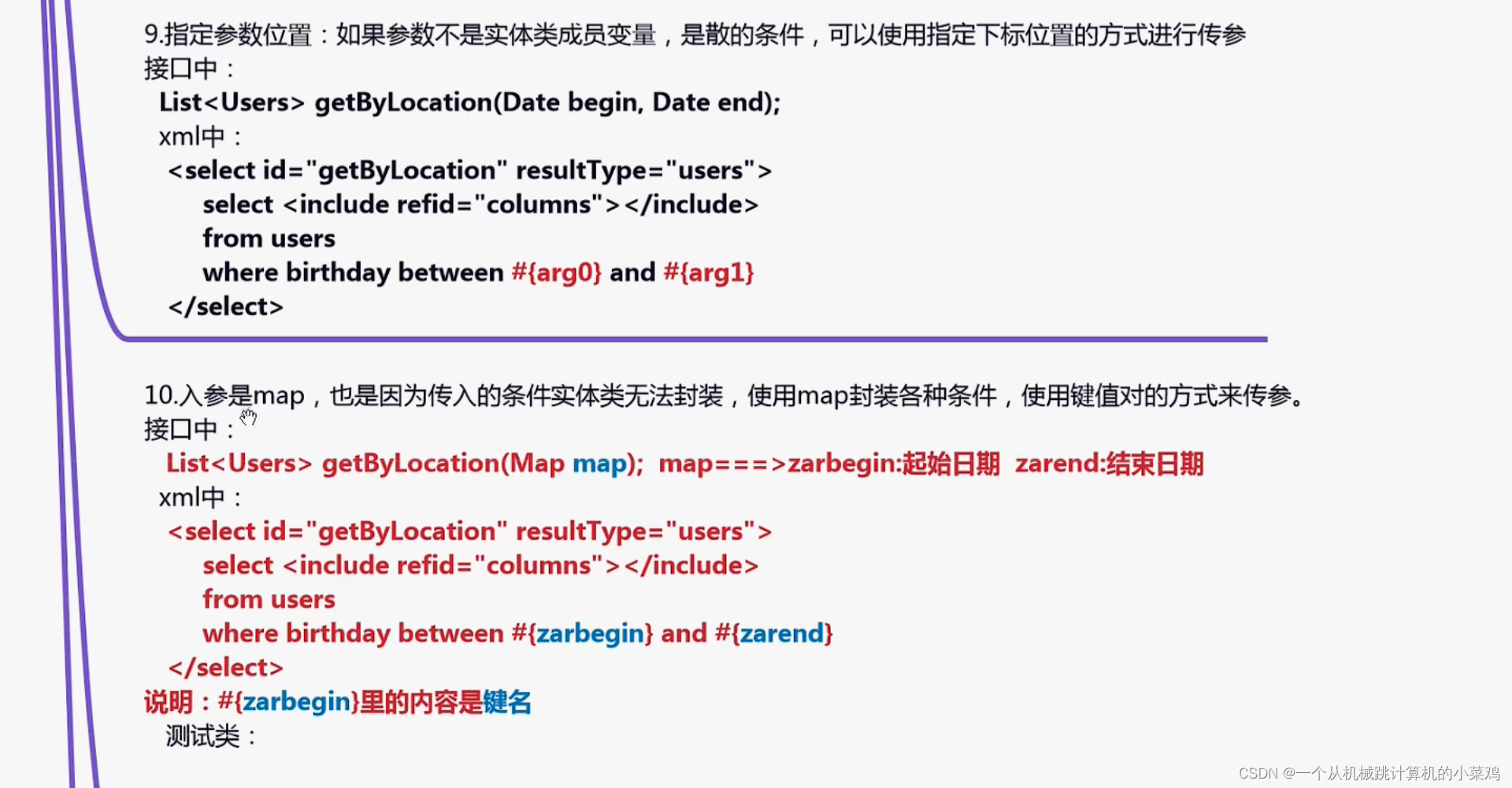























 230
230











 被折叠的 条评论
为什么被折叠?
被折叠的 条评论
为什么被折叠?








